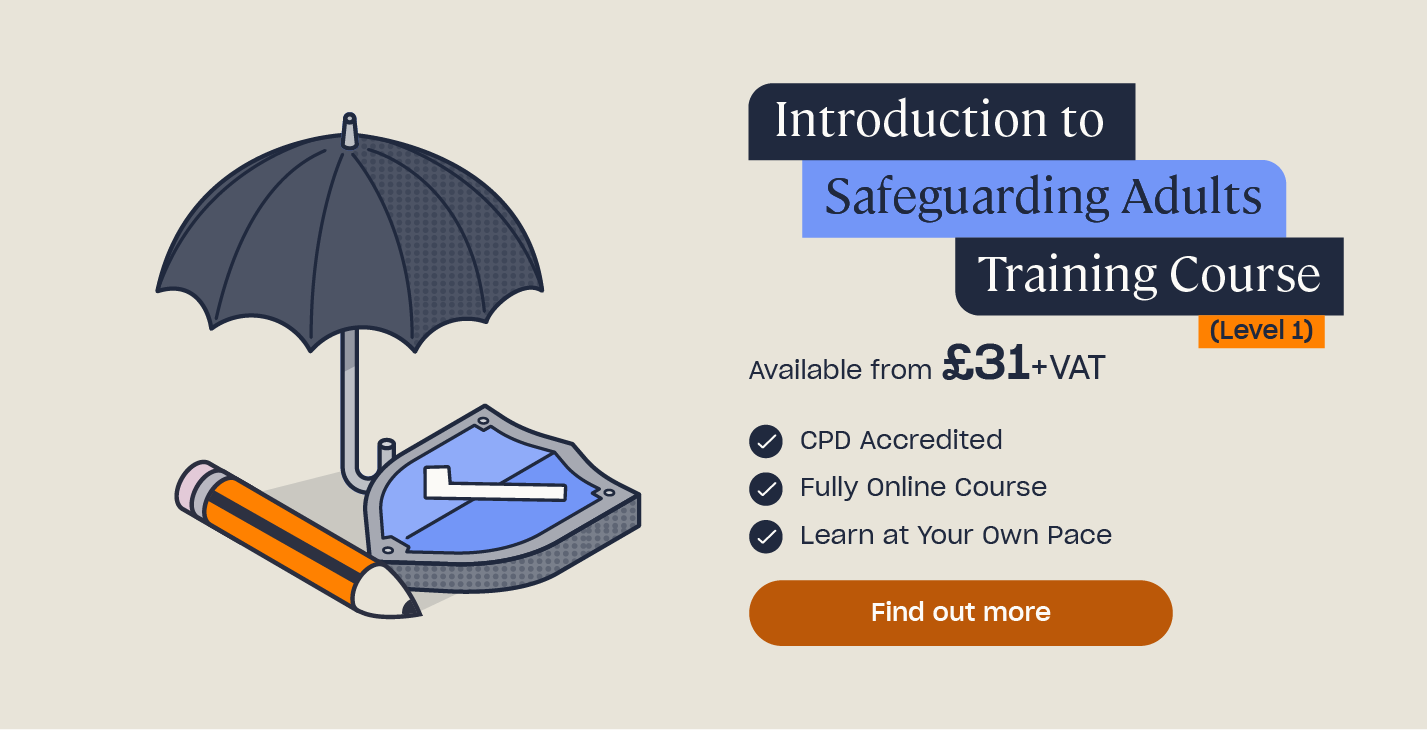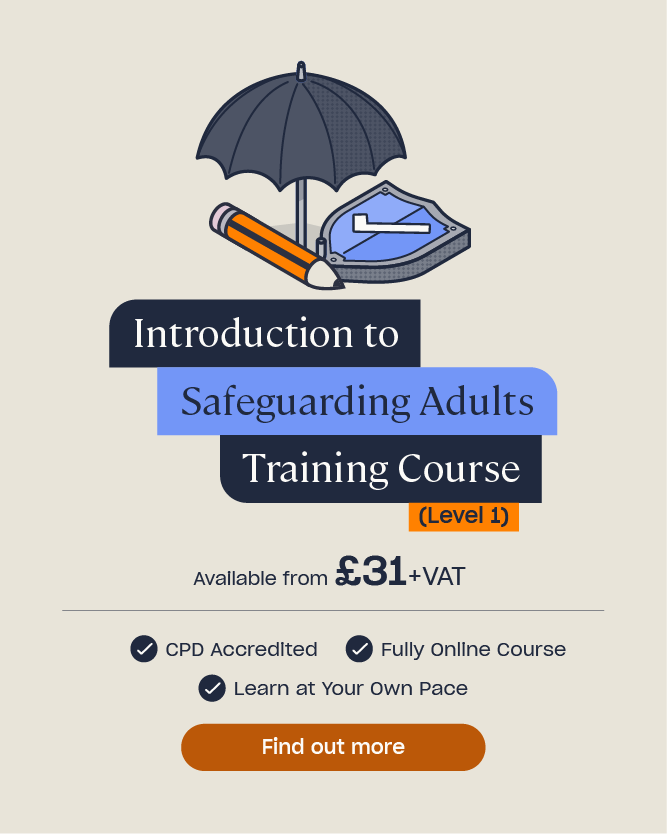Restrictive Practices in Health and Social Care
Restrictive practices and restraints are an important topic to understand if you work in health and social care, and particularly if you work with older patients, in a mental health hospital or with people with learning disabilities or neurodivergent conditions. In this article, we’ll look at what restrictive practice means, give some examples of the different types of restrictive practices and help you understand the rules and regulations surrounding them.
What is Restrictive Practice?
A restrictive practice is an action that prevents a person from doing something. They’re often used in health and social care settings to keep patients safe from something that may cause them serious harm or distress and are also known as restraints.
Restrictive practices can be controversial as they can often stop a person from doing something they want to do, or can be seen as controlling. For this reason, there are strict rules around when restrictive practices can be used and they should only be used as a last resort. They should never be used to punish someone, control someone or handle difficult behaviour.

A restrictive practice should only be used if:
- It’s needed to keep someone safe.
- It’s done for the right reasons and in the right way.
- The patient is fully involved in the decision.
- The practice is used for the minimum amount of time possible.
- The practice is regularly reviewed for effectiveness and suitability.
- The patient’s human rights are upheld.
- All other options have been tried first.
Types of Restrictive Practices
There are many different types of restrictive practices that health and social care settings may opt to use depending on the particular patient and the dangers present. Remember, a restrictive practice must only ever be used as a last resort, after consulting with the patient and in a manner that upholds a patient’s basic human rights. Below are some restrictive practices examples:
Blanket restrictive practices
Blanket rules are when everyone is treated the same and a restrictive practice applies to all patients in the setting, rather than to individuals. Blanket rules often restrict a person’s liberty. For example, requiring all patients to have their lights turned off for bed at the same time or not allowing anyone access to their own medication. Instead, an individual risk assessment should be done for each person and restrictive practices only applied on a case-by-case basis.
Chemical restrictive practices
A chemical restriction is when medication is used to keep a patient safe from harm, often to subdue violent behaviour. This is in addition to any drugs the patient is on for a health condition. For example, using sleeping tablets or injections to send someone to sleep or using rapid tranquillisation to lightly sedate someone, reduce agitation or reduce aggression.
Cultural restrictive practices
A cultural restraint is when a person is prevented from doing something related to their culture. This can be a highly controversial practice and can easily contravene a person’s basic human rights, if not be discriminatory. Examples include not allowing someone to pray at a certain time or stopping someone from expressing their cultural views.
Environmental restrictive practices
An environmental restrictive practice is related to the physical environment the patient is in. Keeping a person in their bedroom at all times, locking their door, making someone go for time-out to calm down, isolating someone, preventing access to outside areas or using solitary confinement are all examples of environmental restraints.

Equipment/mechanical restrictive practices
A mechanical restraint is when equipment is used to stop someone from doing something. Mechanical interventions are usually used to restrict a person’s movement with the aim of controlling their behaviour. For example, using cuffs or belts when moving a patient from one mental health hospital to another.
Observational/surveillance restrictive practices
An observational restrictive practice is where a member of staff watches a patient at all times to keep track of what they’re doing, such as by using cameras in rooms, CCTV in hallways, sitting near them, using GPS trackers or keeping a patient in ‘eyesight’ or at ‘arm’s length’. However, observational restraints can prevent a person from having any privacy, so should be used with care.
Psychological restrictive practices
A psychological restraint is any sort of communication – verbal or non-verbal – that puts pressure on a patient to do something or stop doing something. It might include routine shouting, telling off, making fun or ignoring someone in order to control their behaviour.
Physical restrictive practices
A physical restraint, also known as manual restraint, is when a patient is physically held in order to control their movement. Examples of physical restrictive practices are holding someone down in a chair, holding someone’s hands back or holding someone on the ground in order to subdue them or restrict their physical movements.
Social restrictive practices
Social restraints are used to prevent a patient from interacting with other service users, often because they’re seen as a danger to others or might be verbally abusive to them. Examples include preventing a patient from joining in with activities with other people and seclusion – keeping them away from others completely.
What are the Rules in Using Restrictive Practice?
Restrictive practices should only ever be used as a last resort and when all other options have been tried, as they can have a significant impact on a patient’s mental health and wellbeing and may even contravene their basic human rights. Restrictive practices must never be used to cause pain, suffering, humiliation or as a punishment.
Before using a restrictive practice or restraint, you must ensure:
- All other options have been tried first.
- Patients are asked for their views.
- Patients’ rights are upheld.
- There are clean plans for how the restrictive practice should be used.
- Staff are trained in how to use restrictive practices correctly.

The Mental Health Units (Use of Force) Act 2018 is in place to ensure restrictive practices are not used unfairly. All patients have the right to be treated with dignity and respect, so the use of force as a restrictive practice must always be used proportionately, in accordance with the law and only ever as a last resort. The Act defines use of force as the physical, mechanical or chemical restraint of a patient, or the isolation of a patient (which includes seclusion and segregation).
Want to Learn More?
Increasing your understanding and awareness of mental health is vital for someone who works in health and social care. Take a look at our Mental Health Awareness Training to learn how you can initiate conversations about mental health, and where to go for additional support.
Furthermore, the Human Rights Act 1988 gives those living in the UK legal protection if any of their 16 basic human rights are contravened through the use of restrictive practices. You must keep a patient’s human rights in mind when determining whether a restrictive practice is necessary, as human rights can only be restricted in very specific circumstances.
Below are some additional rules in using restrictive practice that should be considered:
- If a restraint has to be used, it must be done in the best way possible for the patient.
- Only the minimal amount of restraint should be used.
- Where possible, find another way to solve the problem before using a restrictive practice or restraints.
- Consider the needs of the individual patient before using a restrictive practice, as they may need reasonable adjustments for their condition or disability.
- Ensure the details of any restrictive practices used are recorded in a patient’s personal care plan.
All patients deserve to be treated with dignity and respect, kept comfortable and have their rights upheld at all times. For this reason, restrictive practices can be highly controversial and should only be used as a last resort when all other efforts have been exhausted. If you work in health and social care, then it’s essential that you understand the rules for restrictive practices so you can truly look after the patients in your care.
Further Resources:
- Introduction to Safeguarding Adults
- Signs of Abuse in Adults
- How to Deal with Resistance to Care
- Ensuring Human Dignity and Respect in Nursing: A Checklist
- What is the Mental Capacity Act?











